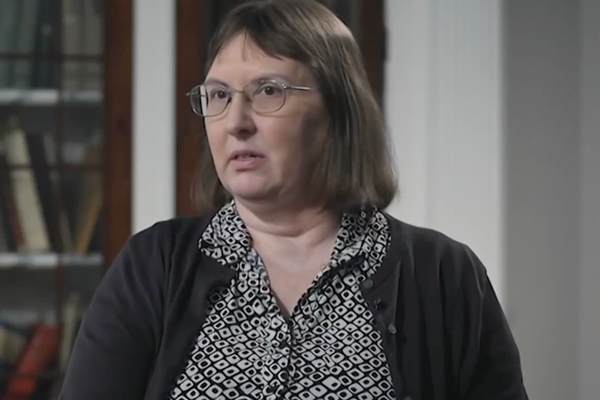
In the midst of the worst overdose epidemic in US history, addiction medicine specialists say a bureaucratic hurdle is adding to the difficulty of getting people in treatment: an insurance industry tactic called “prior authorization”.
Loathed by doctors of all stripes, prior authorization requires healthcare providers to seek permission from insurance companies before they prescribe a treatment. Doctors in addiction medicine said the requirement is both unnecessarily burdensome and could cost lives.
“We have patients who are having overdoses once a month because of the fentanyl being in the drug supply,” said Dr Alain Litwin, a clinical researcher and executive director of the Prisma Health Addiction Medicine Center in South Carolina. “This is the crisis of our time – overdose rates are rising every year”.
In 2021, the most recent year for which data is available, roughly three-quarters of the 107,000 people who died of an overdose had an opioid in their system, approximately 80,000 people.
An estimated 2.5 million Americans 18 and older are believed to suffer from opioid use disorder, the clinical name for an addiction to opioids, illicit or prescribed. People with opioid use disorder suffer “alarmingly high” rates of death and health conditions, research has found.
That risk of death can be halved with use of the gold-standard therapies: medication-assisted treatment with buprenorphine, methadone or naltrexone. However, four out of five Americans addicted to opioids are still not in treatment.
Prior authorization has targeted buprenorphine in particular. Insurance companies can set qualification criteria that require patients seeking treatment for opioid use disorder to submit to urine drug tests, require pill counts, set dosage limits, and mandate patient education or counseling. It also requires doctors to fill out lengthy forms and wait for approvals. All of which, doctors said, makes patients feel stigmatized and delays treatment during an often narrow window when someone is willing to try addiction treatment.
Doctors like Dr Paul Christine, an internist who treats addiction in Denver, Colorado, and works for the city’s safety net health system, said there is no “clinical or economic justification for having a prior auth[orization] in place for buprenorphine”.
While private health insurance companies could theoretically require prior authorization for any medication and procedure, within legal bounds, the tactic is typically reserved for expensive or second-line therapies.
Buprenorphine is “first-line medical therapy for opioid use disorder, a life-saving treatment and it is not expensive”, said Christine. “A lot of this has to do with stigma around the medication and around the disease itself.”
What’s more, prior authorization requirements are not evenly distributed through the health system. For-profit health plans and Republican-leaning states tend to require prior authorization more frequently, according to recent research by Dr Christina Andrews, an associate professor of health policy at the University of South Carolina. Andrews studies prior authorization and is gathering data about how it affects access to buprenorphine.
“I have a whole team of graduate students that spend hours and hours a week wading through the member handbooks and provider manuals for the Medicaid fee-for-service and managed care plans,” said Andrews. “Their rules and regulations are incredibly arduous and complex.”
In her analysis, Andrews said the use of prior authorization in red states suggests the tactic is shaped more by cost control pressures and partisan concerns about criminal buprenorphine diversion than to science about the medication itself.
Prior authorization is especially harmful in one program: Medicaid. More than half of the people who received treatment for opioid use disorder in 2017 used the public health insurance program for the poor and disabled, according to the Kaiser Family Foundation.
Andrews’s team is involved in primary data collection – in other words, she and her colleagues pour over health plans and create their own data sets. Most often, researchers rely on existing data to create analyses. Andrews’ team has been working on data on prior authorization for seven years, and is now drawing conclusions about where and how prior authorization is affecting access to buprenorphine.
“When you’ve got a situation where a person is in an ER or a specialty clinic, they say, ‘I’m willing to try this, I’m willing to get buprenorphine’ – that provider is in that critical window of opportunity,” said Andrews. “Prior authorization forces that provider to say, ‘I gotta get back to you next week.’
“It begs the question – if we know prior authorization is such a barrier to care, and we have the deadliest drug epidemic, why in the world would we retain a policy that would make it more difficult to get the treatment they need? Overdose is now the leading cause of death for Americans under age 50.”
Medicaid was started in 1965 as a joint program between states and the federal government and has grown to insure about 21% of Americans, or 68 million people. In recent years, states have turned to private companies to administer Medicaid. That, in turn, gives private insurers the reins to set prior authorization policies for for the health insurance program.
However, the practice has not gone entirely unnoticed by lawmakers – at least 13 states prohibit Medicaid programs from imposing prior authorization requirements on substance abuse medications, according to the Legal Action Center. Medicare, which is run only by the federal government and insures seniors and disabled people, dropped prior authorization for buprenorphine in most of its plans years ago.
The Biden administration has also taken aim at prior authorization. In January, regulators finalized new rules for companies that do business with Medicare and Medicaid that require prior authorization determinations to be made more quickly. Problematically, the new policies affect only procedures, and not medications like buprenorphine.
The health insurance industry, through the trade group Ahip, or America’s Health Insurance Plans, supported the Biden administration’s regulations, and has said in the past that prior authorization can save money.
Addiction medicine specialists noted that even if all prior authorizations requirements were lifted, this alone would not solve the opioid epidemic.
In a recent analysis in JAMA Health Forum, Christine, the Denver internist, examined how removal of prior authorization affected prescribing in states that ended the practice. Because Christine himself viewed prior authorizations as the “bane of our existence”, he expected to see a boost in prescribing. Counterintuitively, he did not, but that did not make him doubt the “pernicious” power of these barriers.
“The main barrier is there’s a lot of stigma and these patients are, quote-unquote, difficult,” said Christine. “Even if removing these doesn’t cause some big increase in prescribing, it does remove a little bit of the stigma of the medication.”
And, in the era of fentanyl, Christine said failing to treat even one patient willing to take buprenorphine because of a prior authorization requirement is nothing short of “catastrophic”.







